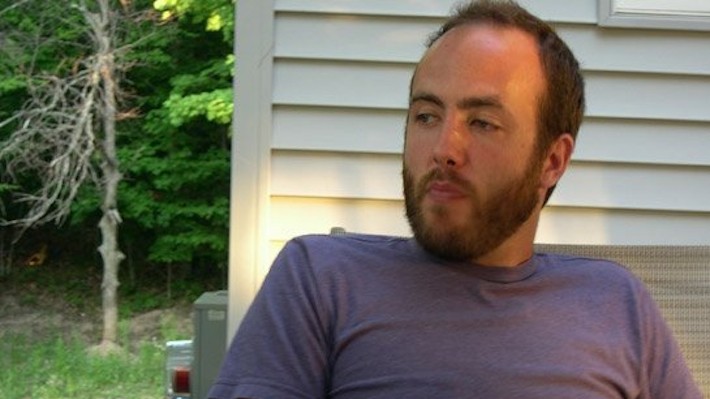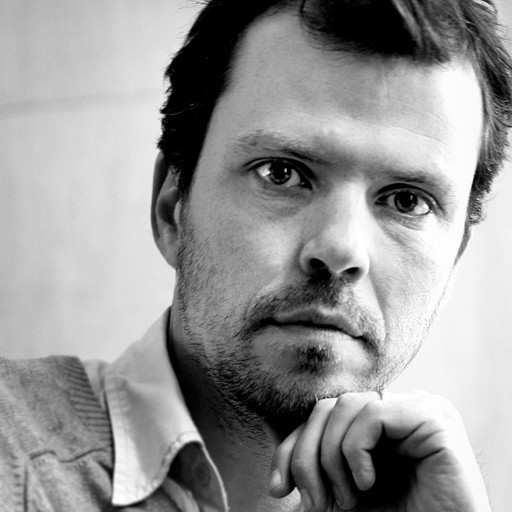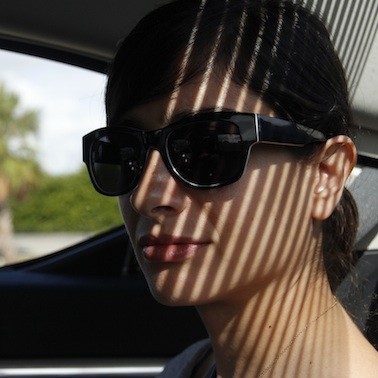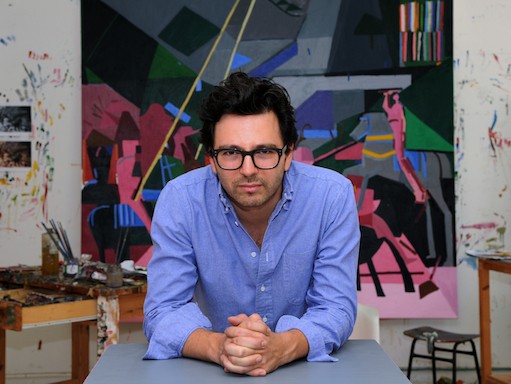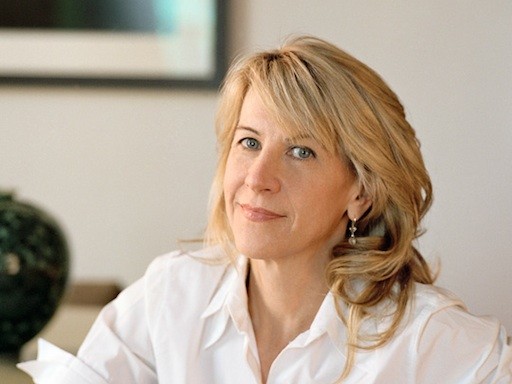Fascinated by simple and direct visual experiences, Dustin London creates works defined by monochromatic schemes, stark lines, and geometric precision. Preferring to construct small-scale paintings, his works are frequently site-specific and temporary, often designed to be painted over at the end of an exhibition. We spoke to London, a 2011 NYFA fellow, about his thoughts on impermanence, his inspirations, and his enthusiasm for French Nabis painter Pierre Bonnard.
You create small, abstract, site-specific wall paintings that you then heavily document before their inevitable destruction. Why is impermanence so important in your work, and, likewise, documentation?
Just before I started making these I was interested in ephemeral visual moments, but was making paintings on canvas that were essentially descriptions of experiences. For example, a simple line may have referred to a shape caught out of my periphery while walking my dog. At a certain point it seemed more appropriate to cut out the middle-man, as it were, and allow the work itself to become impermanent rather than refer to impermanence through a rather concrete form. This corresponded to an ongoing desire for freshness and openness in the work, never wanting to close anything down. It seemed appropriate to shift the work to a place where it was more about process, where a piece became an action or decision in a specific place and specific time, inseparable from me as a living, breathing human being, where the piece also had a certain lifespan. Documenting these actions just felt natural.
Your paintings vary in size from more standard 12-x-8 and 11-x-7 dimensions to works that are barely more than an inch in diameter. What led you to start working on such a small scale?
Tenderness.
Recent paintings of yours from the past year suggest incomplete diagrams or architectural drawings. How do the locations at which you paint affect what you ultimately create there?
The first works that took on this diagrammatic quality were done directly on the wall in a strangely piecemeal architectural space, where the quirks of that space found their way into the idiosyncratic compositional decisions of the work. These newer pieces have not responded to a specific interior space, but to the landscape of southeastern New Mexico where I recently joined my wife at a yearlong residency program. Every point in space there is a kind of singularity, where a fence post or a yucca plant stands undeniably where it is in relation to the vast and open space around it. I think I intuitively responded to the clarity in that, and all that open space became very meditative for me as I looked out my studio window onto that one steady horizon line. I think the work naturally found a similar emptiness in which it could establish clear points and relationships. I also wanted the work to become a more extended meditation, to grapple with a piece over time, so I've shifted again to working on more permanent surfaces.
You've previously mentioned French painter Pierre Bonnard as having a substantial effect on your practice. Known for his practice of painting from notes or studies, in what ways in particular do Bonnard's colorful scenes influence your more formally reserved work?
Bonnard's consciousness is extremely porous, and that is always evident in his mid-late paintings. Those paintings are formed as much from his mind as they are from any external reality in front of him. They are intimate and buoyant, and it feels like my eyes touch a nerve ending that exposes all of his innermost thoughts and feelings when I look at any given point in a painting. For me, he's one of the most sensitive humans to have lived.
You've been known to draw inspiration from the most incidental event or scene. Do you have any advice for better reveling in the quotidian and honing one's receptivity to everyday beauty?
I would never feel right advising anyone on something so deeply personal. I can only say that I strive, like most people probably do in some way, to strike the right balance between working time/meditation, being in the company of those I love, and getting my fix of beauty (whatever that is at a given time) in the world around me.
What made you want to become an artist?
Two things. The first is an experience I had when I was five years old where I tried to imagine nothingness while laying in a bathtub. It made me keenly aware of myself, my existence, and a certain connection to the universe. Making work became a way to keep myself close to this place. The second is probably my dad's love of birds and carving them out of wood. The material and forms of these birds, along with the constant scent of wood burning I think began my love of making early on.
What is your favorite place to see art?
Dia:Beacon…what a sanctuary.
What do you collect yourself?
If I had the means to collect, I would buy everything I could of Edward Gorey's work.
What book has had the biggest impact on your work, or life?
I would have to say Dog! by Prudence Andrew (1975), which was the first book I ever read. A young boy adopts a stray dog and hides him in an abandoned car in a field. Its wet and wintery landscape with dead trees and overcast skies aligned so perfectly with my temperament in a similar way that Joyce did later on.
What would you be doing if you weren't an artist?
I would probably be a musician/composer. I need to have a self-generating practice and composing music is a similarly abstract kind of making for me, one that comes out of the process putting sounds together in specific ways. I would also probably make strange and janky instruments.











